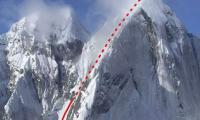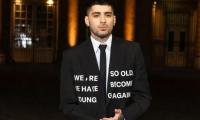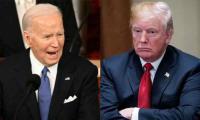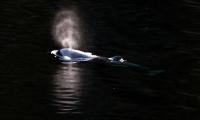There is little doubt left in the minds of nuclear scholars that North Korea has become a full-fledged nuclear weapons state. North Korea, officially the Democratic People’s Republic of Korea (DPRK), had started working on its nuclear weapons programme in the late 1960s despite attaining security guarantees from both China and the Soviet Union.
According to some accounts, the North Korean leadership concluded that it could not count on the Soviet nuclear umbrella after Khrushchev betrayed Cuba during the 1962 Cuban Missile Crisis.
It is also partially true that Pyongyang faced external security threats from South Korea and the US during the cold-war era. However, prominent historians and international relations scholars believe that security threats were not the primary reason behind North Korea’s nuclear deterrent. Rather, the quest for regional prestige and bureaucratic politics created conditions that favoured the nuclear option by encouraging extreme perceptions of national security.
North Korea’s current leader, Kim Jong-un, is not the right person to have control of nuclear weapons in his hands. The country is a major proliferator of ballistic missile technologies and has been working on a wide range of ballistic missile capabilities.
North Korea joined the Nuclear Nonproliferation Treaty (NPT) in 1985, under Soviet pressure, but did not allow safeguard inspections until 1992, raising many questions about its commitment to the goals of non-proliferation and disarmament. Even after 1992, North Korea’s leaders were not ready to voluntarily give up their enrichment program because of China’s tacit support.
In March 1993, Kim Il-sung, the supreme leader of the country, insinuated his country’s possible withdrawal from the NPT, setting the stage for the first North Korean nuclear crisis. Although, the crisis was resolved temporarily in October 1994 when the country signed an agreement with the US, North Korea’s nuclear establishment was not ready to be transparent about its long-term nuclear ambitions.
In addition to freezing key parts of North Korea’s nuclear programme, the agreement also permitted comprehensive inspections of International Atomic Energy Agency (IAEA) sites. In 2002, a welter of new evidence emerged that North Korea was still working on a secret uranium enrichment programme.
In the beginning, North Korean officials resorted to outright denial in the face of compelling evidence but their confrontational posture ultimately led to the breakdown of the Agreed Framework. Despite intense diplomatic pressure, in 2003 North Korea became the first state to withdraw from the NPT and, after few weeks, the government expelled the IAEA inspectors.
Increasing tensions on the Korean peninsula resulted in the launch of the Six Party Talks to end the nuclear crisis through negotiations involving China. This process marked a reversal of the Bush administration’s non-engagement policy. Other members were North Korea, South Korea, the US, Russia, and Japan. However, Kim Jong-il was not ready to accept any step towards the verifiable denuclearisation of his country.
Additionally, the process was hindered many times by North Korea’s repeated missile tests. And the talks reached a stalemate in 2006 when North Korea conducted first underground nuclear test and became the world’s ninth nuclear power.
Despite dishonouring many previous commitments to dismantle its nuclear programme, North Korea made another commitment in February 2007 to shutdown the key plutonium production facilities at Yongbyon in exchange for an aid package of $400 million and fuel oil shipment. After continued efforts by the international community, North Korea also became part of a formal agreement to disable all nuclear weapons facilities.
The talks broke down, once again, in December 2008 following North Korea’s refusal to give IAEA inspectors unlimited access to suspected nuclear sites. In 2009, North Korea conducted another nuclear test and also began reprocessing spent fuel rods. Although Six Party Talks have not been held after 2009, different countries have held bilateral talks with the North Korean regime from time to time.
Violating all international norms on nuclear proliferation, in May 2012, the government of North Korea even changed the constitution of the country to declare itself a “nuclear-armed state.” Furthermore, the country officially declared not to become part of any future dialogue on denuclearisation.
In 2013, North Korea conducted its third underground nuclear test. According to the latest International Penal on Fissile Materials (IPFM) estimates, North Korea has about 0.03 tonnes of separated plutonium, enough for six to ten nuclear weapons.
While the country originally pursued a plutonium route to nuclear weapons capability, intelligence reports indicate that North Korea’s nuclear establishment is using highly enriched uranium (HEU) for weapons purposes. While the first two tests were plutonium-fuelled, there is no reliable information available about whether plutonium or uranium was used in the 2013 test.
According to a 2007 unclassified intelligence report, prior to the 2006 nuclear test, North Korea could have produced up to 50kg of plutonium. Such assessments of plutonium production are based on a number of factors including the power level of the reactors, their days of operation, and how much plutonium is lost in the production process.
But questions about how Pyonyang has been able to develop specialised equipment for its uranium enrichment facility still remain unanswered.
Email: rizwanasghar5@unm.edu
In this picture taken on April 16, 2023, people throng a market area during shopping in Lahore. — AFPCare to cast...
A representational image of a transmission tower, also known as an electricity pylon. — AFP/FileLower electricity...
Pakistan's third Governor General Ghulam Muhammad. — National Portrait Gallery website/FileAs discussed in the...
This image shows Karachi Police personnel and commandos standing guard on November 29, 2023. — Facebook/Karachi...
Earth Day protests carry a vital message that is relevant 365 days a year. — AFP File Earth Day is celebrated every...
People walk along a market in Lahore on May 17, 2023. — AFP/FileMany of us had hoped that the general election...







